The Ampere Altra Review: 2x 80 Cores Arm Server Performance Monster
by Andrei Frumusanu on December 18, 2020 6:00 AM EST- Posted in
- Servers
- Neoverse N1
- Ampere
- Altra
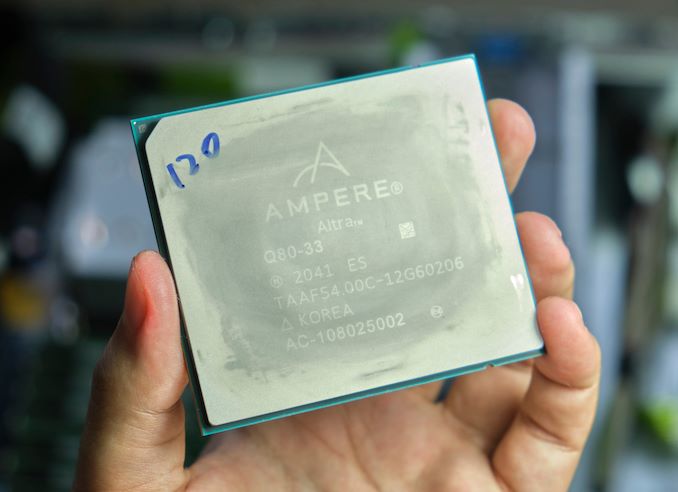
As we’re wrapping up 2020, one last large review item for the year is Ampere’s long promised new Altra Arm server processor. This year has indeed been the year where Arm servers have had a breakthrough; Arm’s new Neoverse-N1 CPU core had been the IP designer’s first true dedicated server core, promising focused performance and efficiency for the datacentre.
Earlier in the year we had the chance to test out the first Neoverse-N1 silicon in the form of Amazon’s Graviton2 inside of AWS EC2 cloud compute offering. The Graviton2 seemed like a very impressive design, but was rather conservative in its goals, and it’s also a piece of hardware that the general public cannot access outside of Amazon’s own cloud services.
Ampere Computing, founded in 2017 by former Intel president Renée James, built upon initial IP and design talent of AppliedMicro’s X-Gene CPUs, and with Arm Holdings becoming an investor in 2019, is at this moment in time the sole “true” merchant silicon vendor designing and offering up Neoverse-N1 server designs.
To date, the company has had a few products out in the form of the eMAG chips, but with rather disappointing performance figures - understandable given that those were essentially legacy products based on the old X-Gene microarchitecture.
Ampere’s new Altra product line, on the other hand is the culmination of several years of work and close collaboration with Arm – and the company first “true” product which can be viewed as Ampere pedigree.
Today, with hardware in hand, we’re finally taking a look at the very first publicly available high-performance Neoverse based Arm server hardware, designed for nothing less than maximum achievable performance, aiming to battle the best designs from Intel and AMD.
Mount Jade Server with Altra Quicksilver
Ampere has supplied us with the company’s server reference design, dubbed “Mount Jade”, a 2-socket 2U rack unit sever. The server came supplied with two Altra Q80-33 processors, Ampere’s top-of-the-line SKU with each featuring 80 cores running at up to 3.3GHz, with TDP reaching up to 250W per socket.
The server was designed with close collaboration with Wiwynn for this dual socket, and with GIGABYTE for the single socket variant, as previously hinted by the two company’s announcements of leading hyperscale deployments of the Altra platforms. The Ampere-branded Mount Jade DVT reference motherboard comes in a typical server blue colour scheme and features 2 sockets with up to 16 DIMM slots per socket, reaching up to 4TB DRAM capacity per socket, although our review unit came equipped with 256GB per socket across 8 DIMMs to fully populate the chip’s 8-channel memory controllers.
This is also our first look at Ampere’s first-generation socket design. The company doesn’t really market any particular name to the socket, but it’s a massive LGA4926 socket with a pin-count in excess of any other commercial server socket from AMD or Intel. The holding mechanism is somewhat similar to that of AMD’s SP3 system, with a holding mechanism tensioned by a 5-point screw system.
The chip itself is absolutely humongous and amongst the current publicly available processors is the biggest in the industry, out-sizing AMD’s SP3 form-factor packaging, coming in at around 77 x 66.8mm – about the same length but considerably wider than AMD’s counterparts.
Although it’s a massive chip with a huge IHS, the Mount Jade server surprised me with its cooling solution as the included 250W type cooler only made contact with about 1/4th the surface area of the heat spreader.
Ampere here doesn’t have a recessed “lip” around the IHS for the mounting bracket to hold onto the chip like on AMD or Intel systems, so the actual IHS surface is actually recessed in relation to the bracket which means you cannot have a flat surface cooler design across the whole of the chip surface.
Instead, the included 250W design cooler uses a huge vapour chamber design with a “pedestal” to make contact with the chip. Ampere explains that they’ve experimented with different designs and found that a smaller area pedestal actually worked better for heat dissipation – siphoning heat off from the actual chip die which is notably smaller than the IHS and chip package.
The cooler design is quite complex, with vertical fin stacks dissipating heat directly off the vapour chamber, with additional large horizontal fins dissipating heat from 6 U-shaped heat pipes that draw heat from the vapour chamber. It’s definitely a more complex and high-end design than what we’re used to in server coolers.
Although the Mount Jade server is definitely a very interesting piece of hardware, our focus today lies around the actual new Altra processors themselves, so let’s dive into the new Q80-33 80-core chip next.


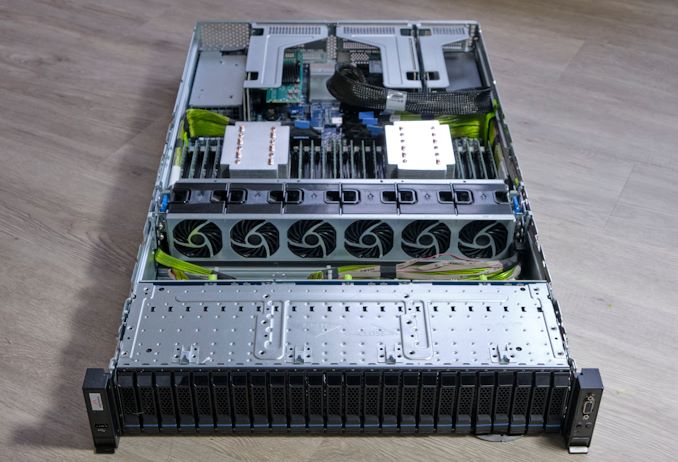
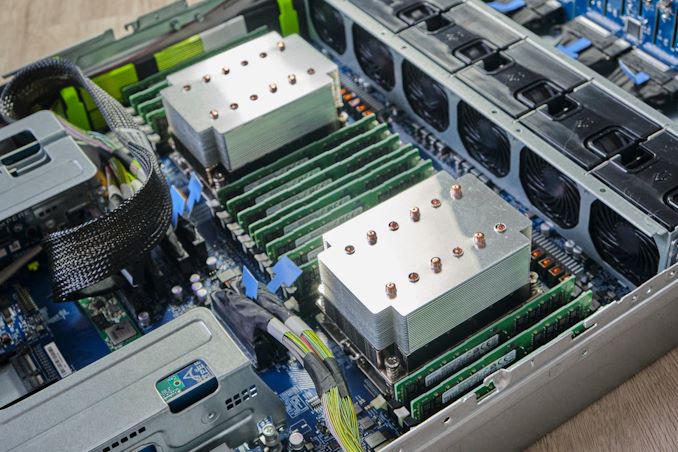
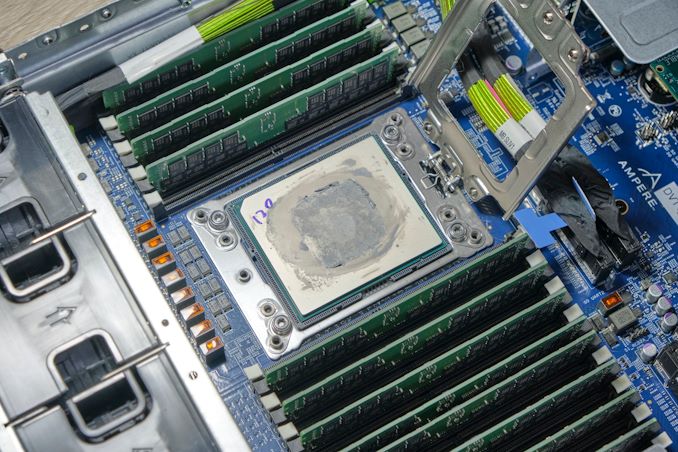
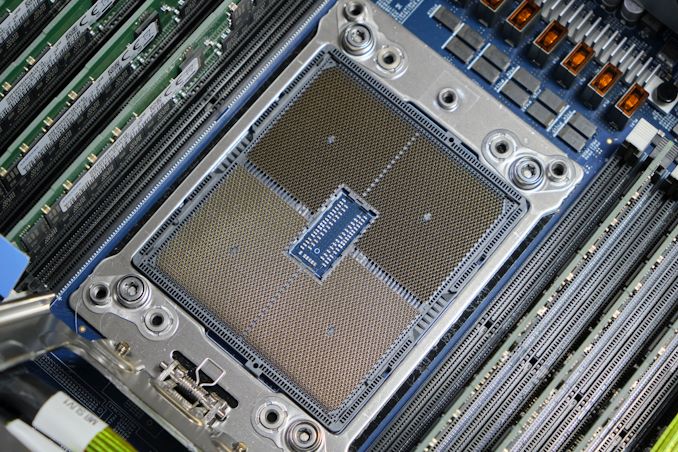
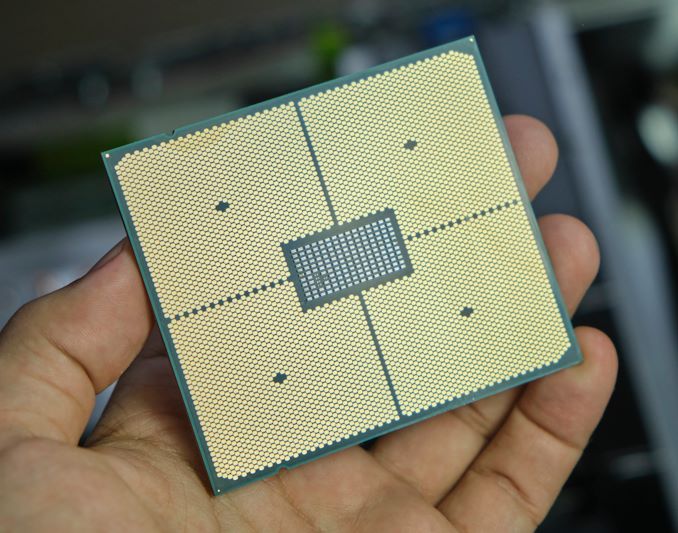

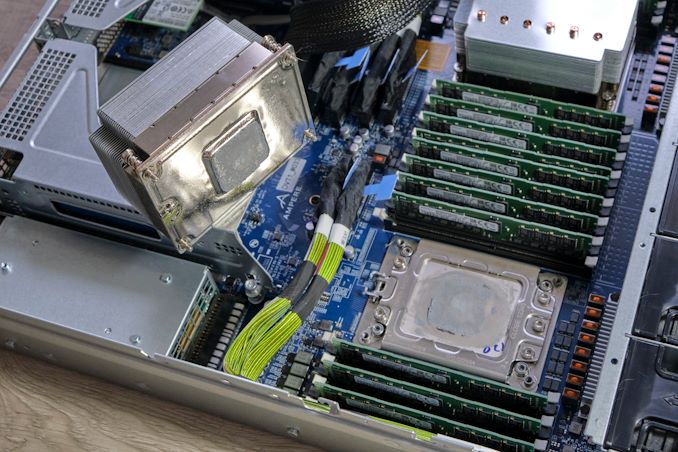
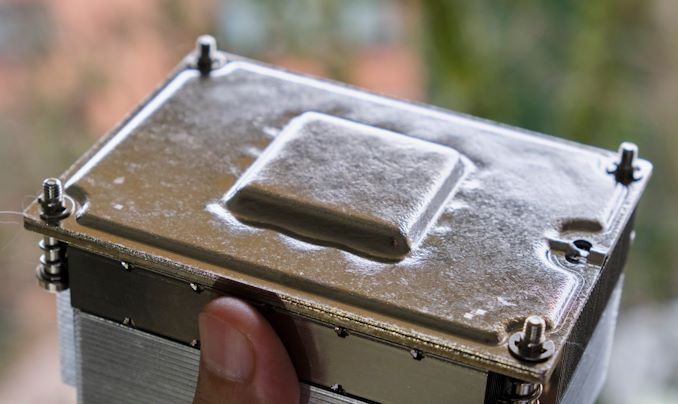
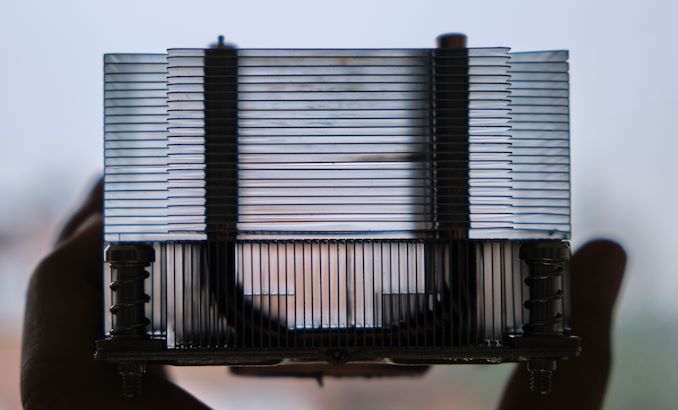








148 Comments
View All Comments
Wilco1 - Monday, December 21, 2020 - link
Using Zen 2 is not correct since it uses much larger transistors. Using Kirin 990 5G density gives an estimate of 330mm^2 for Graviton 2. The size of N1 cores has been published for 7nm, so we know it is 1.4mm^2. You're right that PCIe lanes would add to it as well - assuming the PHYs have the same size as DDR PHYs at the same speed, 64 lanes would be about 12-15mm^2. That would increase it to about 365mm^2.milli - Monday, December 21, 2020 - link
Kirin 990 5G uses N7+. Altra uses N7.Not only is the process different but they're also totally different categories of products concerning transistor density. A mobile SOC can be very dense. It barely has any IO (which is not transistor dense). Also GPU, DPU, IMG, ... all are extremely dense.
Kirin 990 5G is 90MTr/mm^2.
No way a server class SOC is going to be more than 60MTr/mm2.
Renoir = 62, Navi 21 = 52, Zen2 = 54, Vega 20 = 40, Navi 10 = 41.
Ampere isn't going to magically break 60.
"The size of N1 cores has been published for 7nm, so we know it is 1.4mm^2"
Those are ARM numbers and that is only if you use high density libraries.
Wilco1 - Monday, December 21, 2020 - link
Arm servers don't need high performance libraries - even mobile phones clock over 3 GHz using high density libraries. See https://images.anandtech.com/doci/13959/03_Infra%2... (note 3.1GHz and 1.4mm^2 with 1MB L2 on 7nm is ~100MT/mm^2)Using ~90MT/mm^2 for 7nm is reasonable since that is the reported density of recent 7nm chips (Kirin 990 5G is 91, 4G is 88 - the older 980 gets 93). Mobile SoCs already have a large amount of IO and analog logic and we are multiplying that amount by 3x.
This shows how stupid it is to use high performance libraries in server chips - they don't need to run at 5GHz!
milli - Monday, December 21, 2020 - link
We have different opinions but there's only one true fact: the die size is not disclosed. So anything anyone says is just a pure guess. You can't throw it around as fact.milli - Monday, December 21, 2020 - link
Navi 10/20 chips run at < 2Ghz and are 40MTr/mm. Just because Altra runs at 3.3Ghz, doesn't mean that it doesn't use HPL.Josh128 - Friday, December 18, 2020 - link
Exactly-- no way in hell this thing is just 350mm^2. The package is huge. Why would a 350mm^2 die need such a giant package?Wilco1 - Friday, December 18, 2020 - link
The package is only 16% larger than EPYC. Do you see any opportunity to reduce the huge number of pins? There are 8 memory channels plus full 128 PCIe lanes.mode_13h - Sunday, December 20, 2020 - link
Yes, the problem Altra Max will likely face is more memory bottlenecks. Also, I wonder if they'll have to dial clocks down, a little, to keep the power-efficiency numbers attractive.Wilco1 - Monday, December 21, 2020 - link
Altra Max drops max frequency to 3GHz, but it's not clear whether the TDP stays the same.Gondalf - Friday, December 18, 2020 - link
Are you sure :). Come on